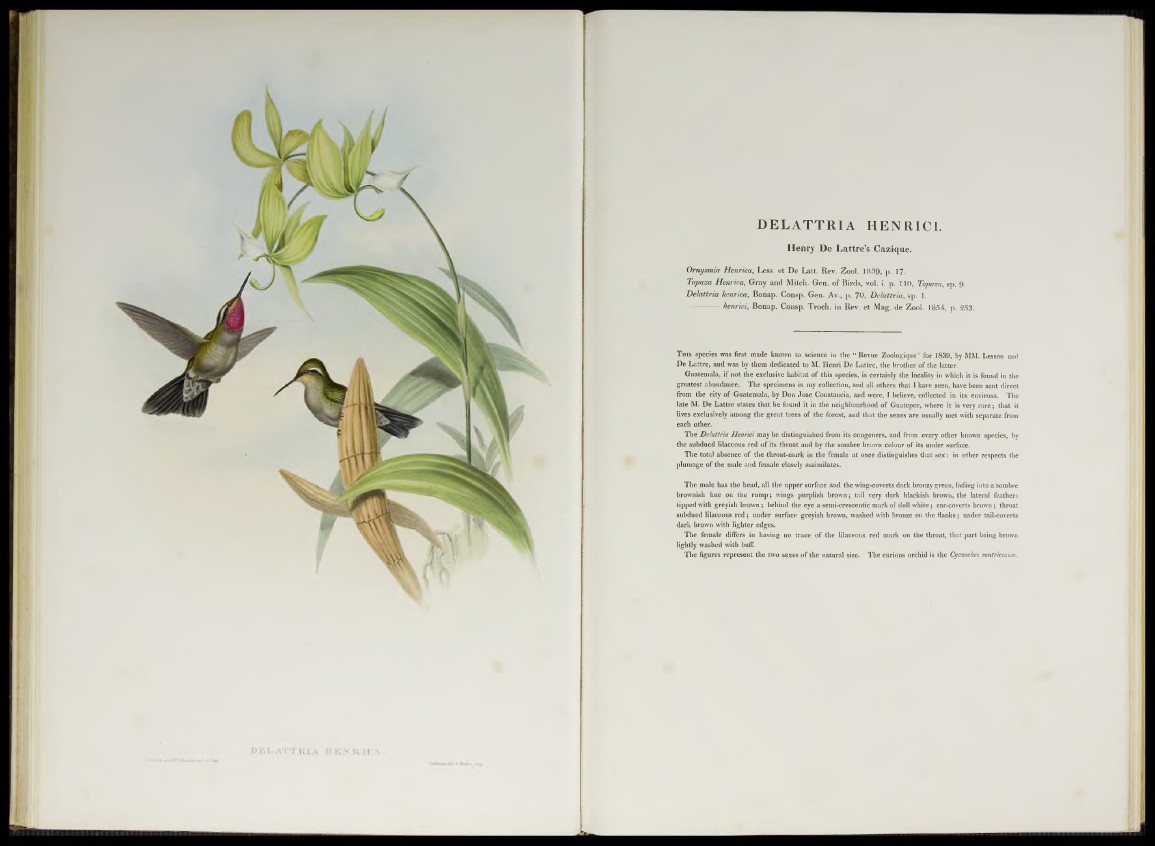
DELATTRIA HENRICI .
Henry De L a ttre ’s Cazique.
Ornysmia Henrica, Less. et De Latt. Rev. Zool. 1839, p. 17.
Topaza Henrica, Gray and Mitch. Gen. of Birds, vol. i. p. 110, Topaza, sp. 9.
Delattria henrica, Bonap. Consp. Gen. Av., p. 70, Delattria, sp. 1.
henrici, Bonap. Consp. Troch. in Rev. et Mag. de Zool. 1854, p. 253.
T h is species was first made known to Science in the “ Revue Zoologique” for 1839, by MM. Lesson and
De Lattre, and was by them dedicated to M. Henri De Lattre, the brother of the latter.
Guatemala, if not the exclusive habitat of this species, is certainly the locality in which it is found in the
greatest abundance. The specimens in my collection, and all others that I have seen, have been sent direct
from the city of Guatemala, by Don Jose Constancia, and were, I believe, collected in its environs. The
late M. De Lattre States that he found it in the neighbourhood of Guatepec, where it is very rare; that it
lives exclusively among the great trees of the forest, and that the sexes are usually met with separate from
each other.
The Delattria Henrici may be distinguished from its congeners, and from every other known species, by
the subdued lilaceous red of its throat and by the sombre brown colour of its under surface.
The total absence of the throat-mark in the female at once distinguishes that sex: in other respects the
plumage of the male and femaleclosely assimilates.
The male has the head, all the upper surface and the wing-coverts dark bronzy green, fading into a sombre
brownish hue on the rump; wings purplish brown; tail very dark blackish brown, the latera) feathers
tipped with greyish brown; behind the eye a semi-crescentic mark of dull white; ear-coverts brown; throat
subdued lilaceous red; under surface greyish brown, washed with bronze on the flanks; under tail-coverts
dark brown with lighter edges.
The female differs in having no tracé of the lilaceous red mark on the throat, that part being brown
lightly washed with buff.
The figures represent the two sexes of the natural size. The curious orchid is the Cycnoches ventricosum.